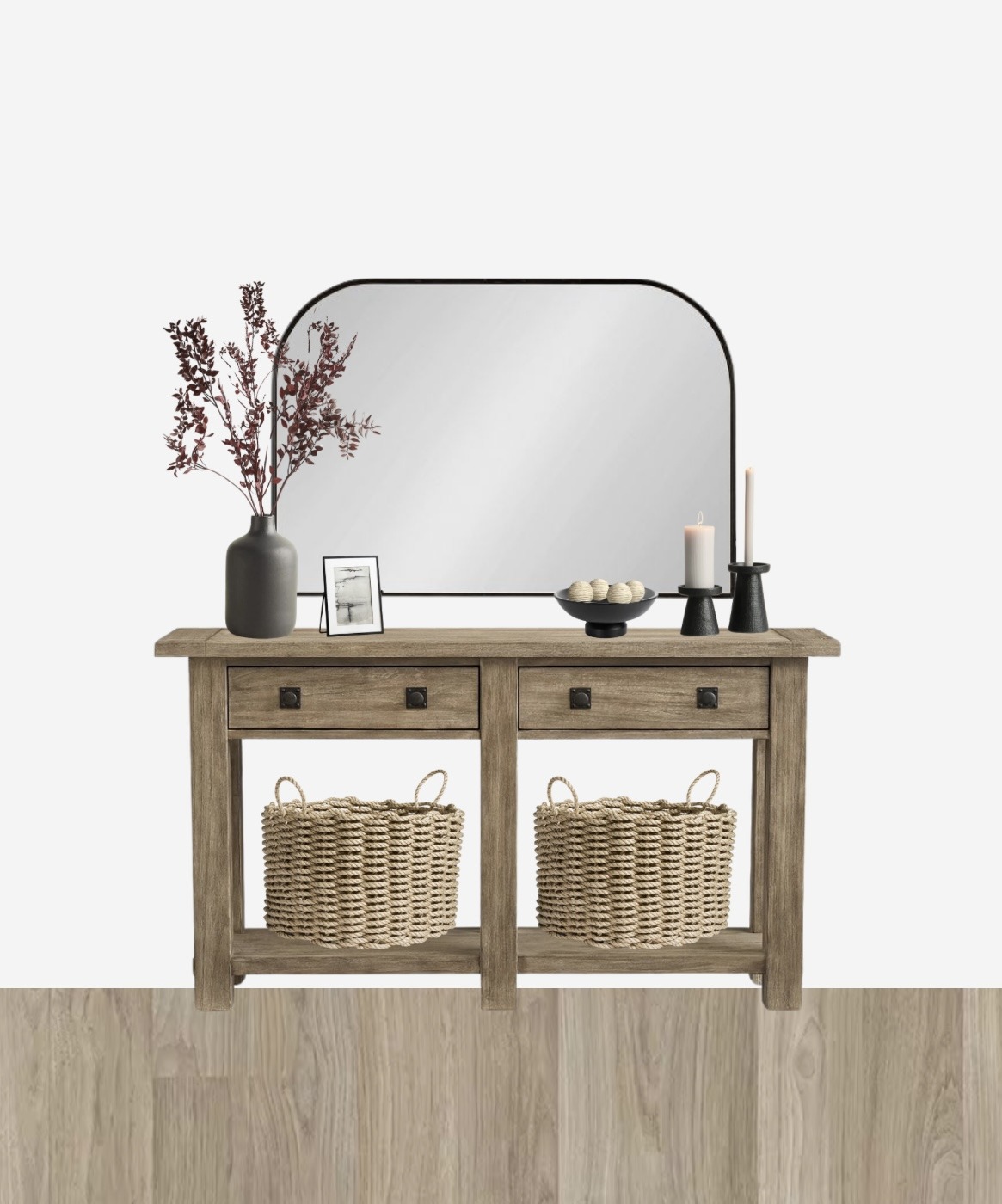
Japandi decor is a fusion of Japanese and Scandinavian styles, combining the simplicity, functionality, and warmth of Scandinavian design with the minimalism, balance, and elegance of Japanese design.
This hybrid style has gained popularity for creating serene, harmonious spaces that blend Eastern and Western design principles. Today, I’m breaking down essential elements that make up this style so you’re well equipped to give your home a gorgeous Japandi refresh.

Related: Japandi Bedroom: 10 STUNNING Features To Copy In Your Space
Japandi Decor
1: minimalism

Minimalism plays a pivotal role in the serene and harmonious ambiance of Japandi decor. In Japandi, minimalism is not merely an aesthetic choice; it’s a guiding philosophy that embraces simplicity, functionality, and an uncluttered visual landscape.
Spaces are curated to feature only essential and purposeful items, creating an environment where every piece serves a deliberate role in enhancing the overall sense of tranquility.
2. neutral & earthy colors

Whites, grays, beiges, and muted tones dominate a Japandi color scheme, creating a calm and unobtrusive backdrop. These hues provide a versatile canvas, allowing the natural beauty of materials like wood and stone to take center stage.
Earthy tones, including soft greens and warm browns, are often introduced to evoke a connection with nature and bring an additional layer of warmth to the space.
3. natural materials

In this style, you’ll find an emphasis on wood, bamboo, stone, rattan, and other organic materials. These elements contribute to a sense of warmth and natural beauty emphasized in both Japanese and Scandinavian design.
The use of light-toned woods, such as oak or birch, aligns with the Scandinavian penchant for bright interiors, while darker woods like walnut or teak contribute to Japanese design’s emphasis on grounding and balance.
Related: Japandi Coffee Table Styling Ideas For A Zen Living Room
4: functional furniture

Furniture often serves multiple purposes and has a clear purpose within the room, commonly including built-in storage solutions to maintain an organized and clutter-free environment. This practice creates living spaces that are not only aesthetically pleasing but also highly practical.
5. wabi-sabi aesthetics

Wabi-sabi is a philosophy rooted in ancient Japanese culture that emphasizes the beauty of imperfections, simplicity, and authenticity.
In the context of Japandi decor, this manifests in the selection of decor items that embrace the marks of time, such as slightly weathered wood or imperfect ceramics. Texture in these decor elements is key, such as grainy wood furniture or woven floor mats.
Related: Wabi Sabi Interior Design: What Is It + 8 Ways To Get The Look
6. clean lines

Straight and clean lines are a prominent feature in this style of interior, contributing to the overall feeling of simplicity and order within the space. The clean lines draw inspiration from the Scandinavian emphasis on simplicity and the Japanese concept of “kanso,” which values simplicity and elimination of the unnecessary.
7. open & airy spaces

In this style, large windows allow natural light to flood the interiors, creating a bright and welcoming atmosphere. Sliding doors and the use of light neutral colors contribute to a sense of expansiveness and spaciousness.
Also common are open layouts, allowing for a seamless flow between different areas of the home to promote a feeling of tranquility and balance.
Related: 13 Japandi Bathroom Ideas For A Serene, Minimalist Paradise
8. japanese zen elements

Borrowing from traditional Japanese design principles, Japandi decor often incorporates Zen elements such as bonsai trees, bamboo, and carefully arranged rock gardens.
These elements are chosen not only for their visual appeal but also for their ability to evoke a sense of harmony and connection to nature. The incorporation of Zen decor goes beyond aesthetics, fostering a sense of calm and mindfulness within the home.
9. woven textures

Woven textures play a crucial role in enriching the tactile experience and visual depth of this style. These textures introduce a touch of warmth and craftsmanship, adding intrigue to the clean lines and minimalist backdrop characteristic of Japandi.
Some common ways to incorporate woven decor into your home are with rugs, baskets, lighting fixtures, and wall hangings.
Related: 15 BEAUTIFUL Japandi Dining Table Ideas To Recreate!
Thanks for reading this article about japandi decor! If you liked it, give it a share or save it to Pinterest so you can come back to it later.

This article about Japandi decor contains affiliate links, which means that if you make a purchase through a link on this page, we earn a small commission at no extra cost to you.



